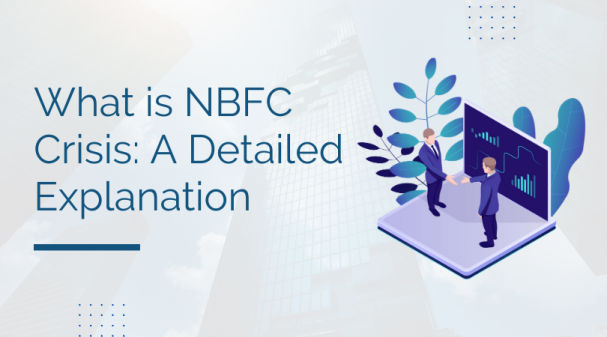The crisis that happened in the NBFC sector has surely bought in many issues. The NBFCs must look for various methods that could resolve the issues as soon as possible.
The Non-Banking Financial Companies have been major contributors to the Indian economy. Since their introduction, they performed better than the different banks that exist and replaced the various activities of the banking sector and the various functions a bank normally performs. In order to set up an NBFC, it is mandatory to acquire NBFC License and only after receiving the license the various business activities can be commenced.
Importance of NBFCs for the economy
- Provides the corporation with funds through equity participation
- Offer long-term credit trade and commerce industry. Long term credit permits sustainable growth and helps in the development of the economy
- Offers stable and fixed interest rates
- Helps in the mobilization of resources and it converts savings into investments
- Aids to increase capital stock of a company
- Provision of Long-term Credit and specialized Credit
- Aid in Employment Generation
- Help in development of Financial Markets
- Helps in Breaking thecircle of poverty by serving as government's instrument
Classification of NBFCs on the basis on activity
| Investment activities | Lending or similar activities | Other activities |
| Investment Company Core Investment Company Non-Operative Financial Holding Company
| Loan Company Asset Finance Company Micro Finance Institution Infrastructure Finance Company Infrastructure Debt Fund Factors | Mortgage Guarantee Company Peer-to-Peer Lending Platform Account Aggregator
|
Documents required to obtain NBFC License in Indi
Certain documents should be submitted along with the application form to RBI within a stipulated time period. Some of the important documents required are as mentioned below–
- Certified copies of Certificate of Commencement of Business and Certificate of Incorporation of the company.
- Certified copies of Articles of Association (AOA) ad Memorandum of Association (MOA) of the company
- Copies of PAN/CIN made for the company.
- Director’s profile filled and signed by every director.
- Experience certificate of the directors from the NBFCs from where the directors have gained experience related to NBFC.
- The CIBIL Data concerning the directors of the company.
- Certified copy of the Board Resolution for the presentation of “Fair Practices Code”.
- Board Resolution in particular that approves the submission of the application and authorizing signatory.
- Board Resolution that the company has not kept any deposits and has not accepted any public deposits. Also, it must mention that it will not accept any in the near future without any prior approval from the Reserve Bank of India.
- Board resolution that mentions that the company does not own any NBFC unregistered NBFC and no business activities are being initiated without getting it registered from RBI.
- Financial Statements of the previoustwo years of Unincorporated Bodies.
- A list that mentions Authorized Share Capital and the updated shareholding outine of the enterprise.
- Copies of Fixed Deposit receipt and Bankers certificate that mentions balances of Net Owned Funds.
- The details of Profit & Loss account and Audited Balance Sheet of three years along with directors & auditors report.
- Details related to bank accounts/ postal address of the branch/bank, loan/credit facilities.
- Self-attested Bank Statement/Income Tax returns.
- The business strategy or plan of the firmof the next three years clearly mentioningessential details about the business, market segment and balance sheets, cash flow statement, asset or income statement without any inclusion of public deposits.
NBFC Registration Process to obtain NBFC License in India
The important steps in the registration process must be followed which is crucial for receiving the license and for the establishment of the company. The NBFC License plays an essential role and it must be acquired after following proper registration process.
- Registration of the Company before application filing
The first step in acquiring NBFC Licenseis company registration. The company must be registered as per the Companies Act 2013 or Companies Act 1956.
- Ownership of Net Owned Funds
A minimum Net Owned Funds (NOFs) must be held by the company. The amount must be Rs2 crore or more.
- Presence of Directors
There must be at least one director in the company.
- CIBIL Score
Maintaining a Good CIBIL score is essential as it is an important aspect that is considered and it fulfills the eligibility requirements to register as an NBFC.
- File the Application form
The next step in the process is to file an application form on the website of RBI.
- Submission of important documents
Next, the applicant must Submission of all the required documents along with the application form.
- Obtaining CARN Number
After the submission of the application form and the documents, a CARN number will be provided to the applicant.
- Submission of the application form
Hard copy of the application must be submitted to the regional branch of RBI.
- Arrival of NBFC License
After the application is approved and verified, the License will be provided to the company.
NBFC Liquidity Crisis
Fintech Startup faced NBFC liquidity crisis since the bankruptcy of Infrastructure Leasing & Financial Services(IL&FS), one of the largest infrastructure development and financial companies. The IL&FS scandal took place in September 2018. The debenture holders of the company were the individuals who affected the most. The pension fundcompanies, mutual fund companies and lenders who had borrowed to the company had to undergo huge losses. 40% of the incremental consumer financing was done by NBFCs. 45-50% of the finances of these financial companies werebeing received from Mutual funds during that time.
NBFCs have been facing a liquidity crunch since then. They are finding it difficult to raise funds. The reasons behind the liquidity crunch are many. To start with, the NBFCs were dependent on short term funds which led to asset – liability mismatch. The NBFCs followed a cycle in which they raise money by selling debt papers and lend it as a particular type of loan. The NBFCs then have to renew the papers they sold or raise new loans in order to pay the amount of the papers. This cycle was broken because of the default done by some of the firms of the IL&FS group. Looking at the situation, many institutions refused to pay to the NBFCs.
Conclusion
The crisis that happened in the NBFC sector has surely bought in many issues. The NBFCs must look for various methods that could resolve the issues as soon as possible. They must find new ways to raise funds, identify and resolve all the shortcomings that can contribute in their downfall. Coming out of the current situation should be their main focus at present.





